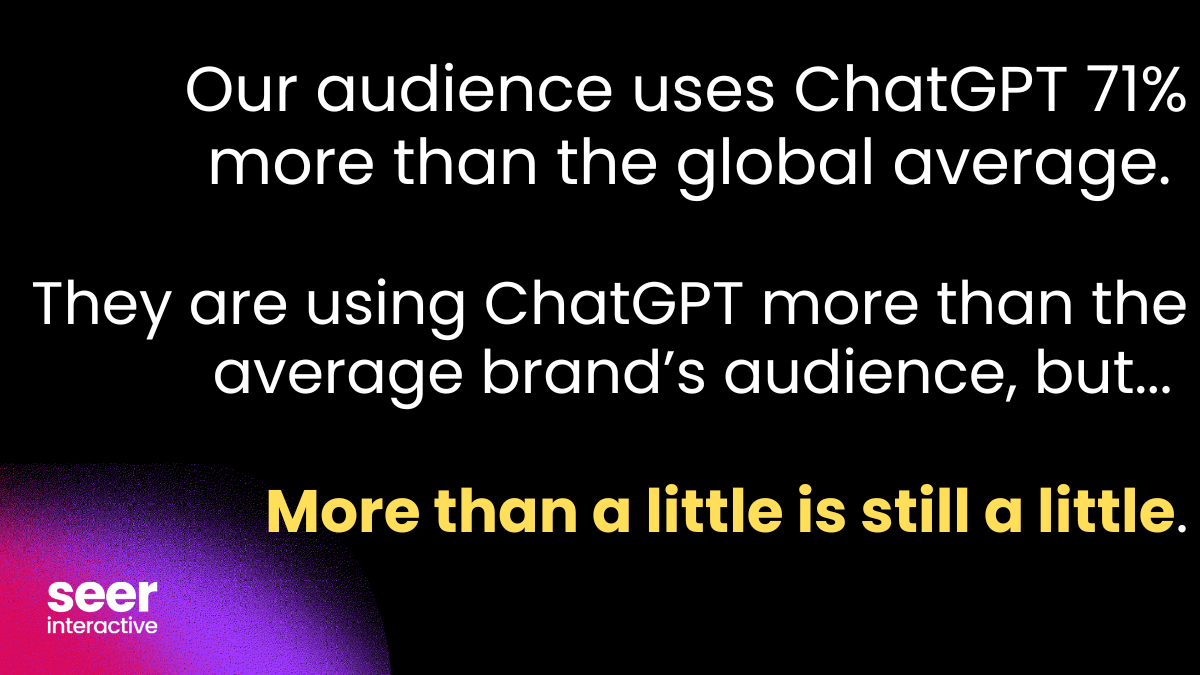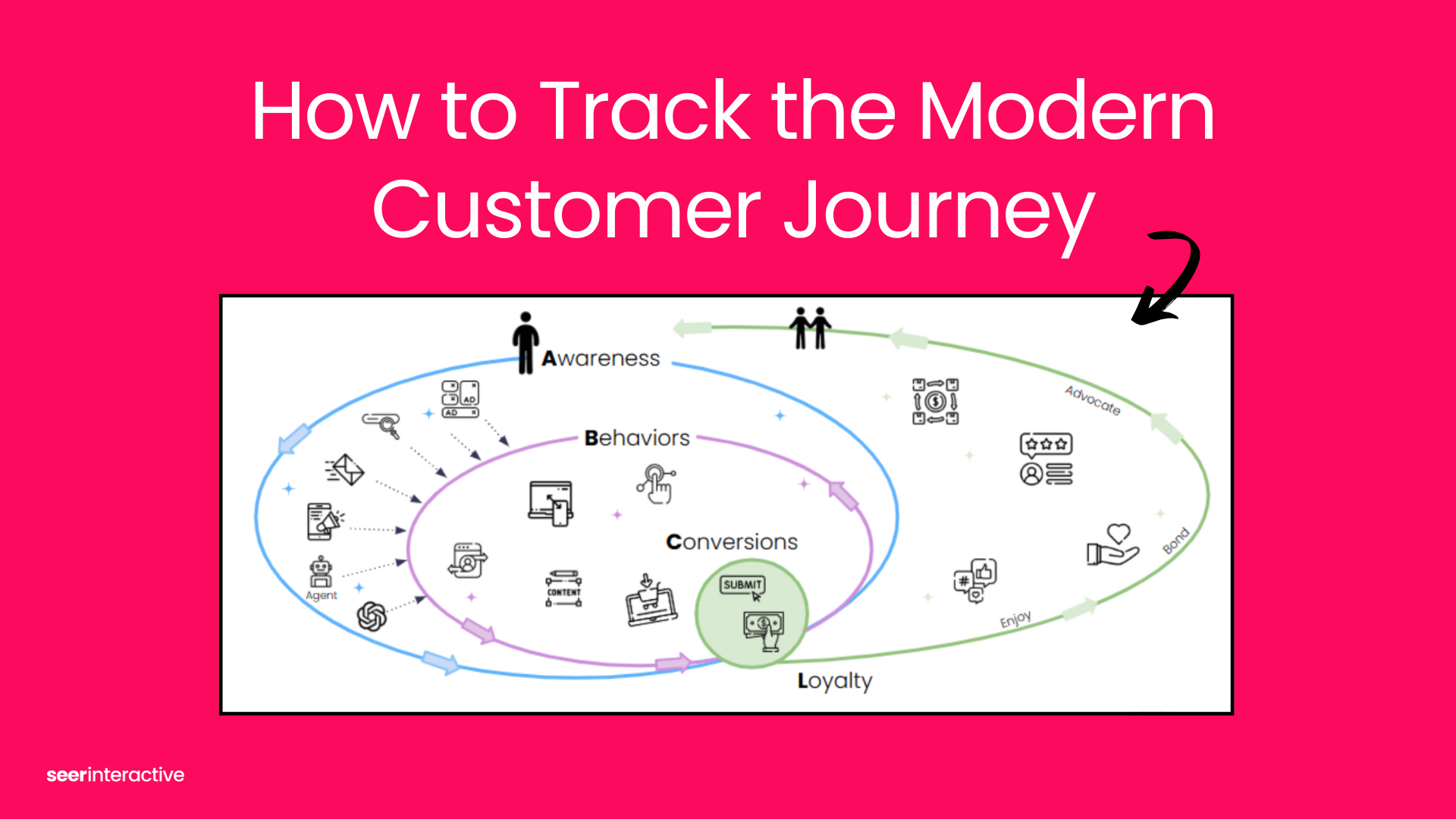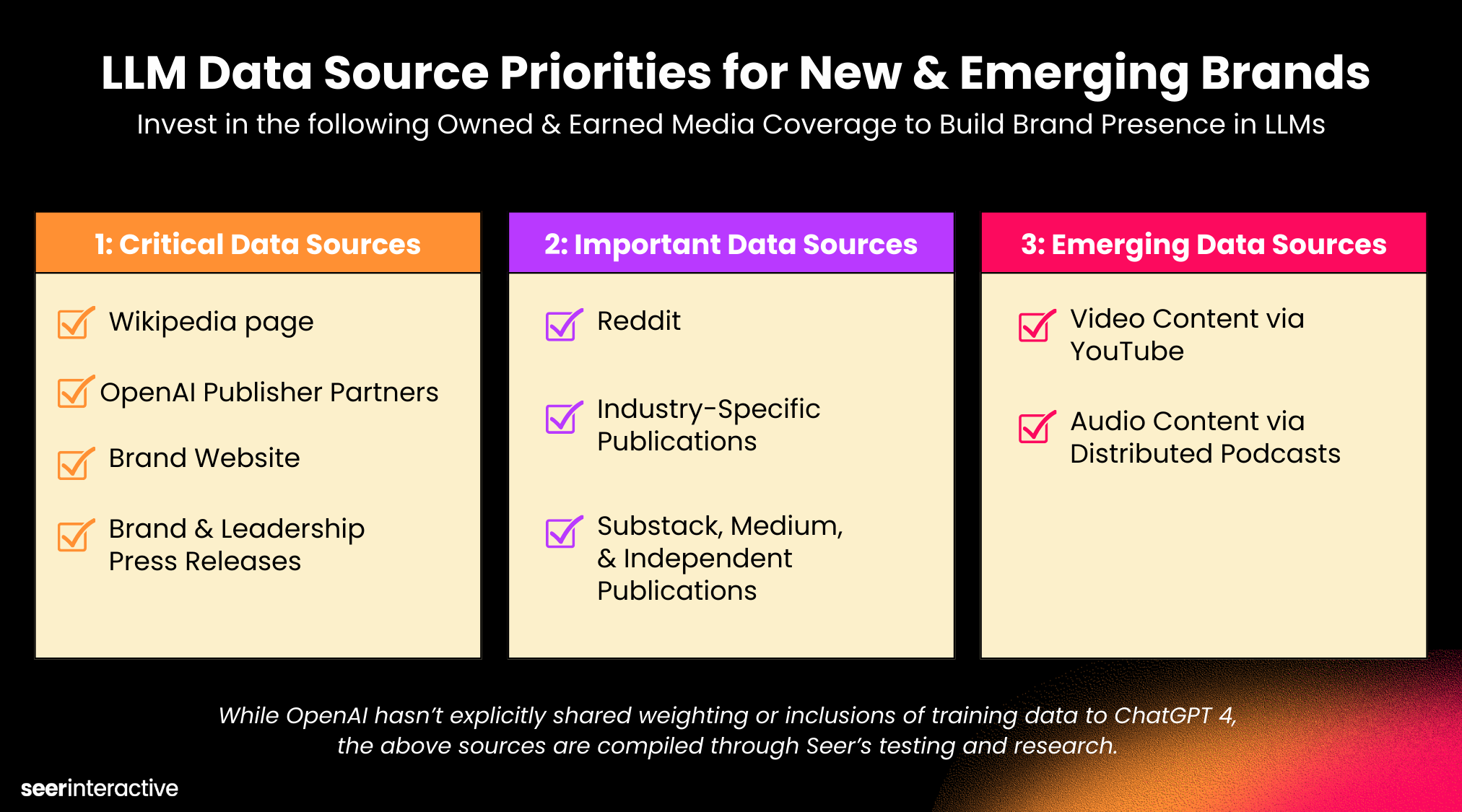AI and search is on everyone’s mind. Clients and prospects alike have been asking us:
-
Am I losing organic search traffic to AI?
-
How do I optimize for GEO (Generative Engine Optimization)?
-
What do I need to do to be ready for AEO (Answer Engine Optimization)?
-
What do we need to do to prepare for how search is changing?
The motivation behind these questions ranges from genuine curiosity to fear and uncertainty. I get it. Many of us see something moving very quickly towards us in the distance and we’re trying to clock exactly when it gets here and what it will feel like when it does.
Why Going All-In on AI Search Is Premature
While there’s still so much exciting research ahead of us with GEO and AEO, I don’t believe that’s where the majority of brands should be focused today. I have a few concerns with the concept of going ‘all in’ on AI search platforms.

Google’s market share is likely to shrink, but the vast majority of people using the internet today are still searching on Google. (source)

The evolution of LLMs has been staggeringly good. I worry for individuals who are attempting to reverse engineer a system that the most brilliant minds in the world don’t fully understand.
Even if they luck out with some hacks, who’s to say those hacks still work with the next iteration of these LLMs?
The most logical observations for how to get your brand to appear in LLMs largely align with best practices for how to get your brand to appear in traditional search engines: Become a popular brand within your audience, be mentioned in sources your audience trusts, structure your content clearly, and focus on creating value for your audience.
All that said, I also have concerns with the marketers who are taking the ‘ostrich approach’ to change. Shouting into the LinkedIn void about why LLMs actually aren’t good or useful is beyond unproductive. And those with their eyes on the horizon are quite right to be looking ahead.
Change is coming, and it will be incredibly disruptive.
- ChatGPT’s usage still pales in comparison to Google (and YouTube, and Facebook, and Instagram, and X…), but it’s growing far more rapidly. In fact, ChatGPT doubled the amount of weekly active users YoY and as of August 29, 2024 had 200 million weekly active users. (source)
- ChatGPT is a very useful tool. SearchGPT is a very useful tool. There are many cohorts who have largely bought into the value of generative engines, and those cohorts have problems they seek to solve with content found online.
- Students, software developers, marketers, and sales professionals are among those cohorts. So, while overall traffic and engagement is minimal, if you are trying to attract marketers or software engineering students, the time to prioritize GEO may actually be now.
- Those who were slow to adopt digital or attempting to disrupt an industry should understand the importance of establishing a moat early, and the opportunity cost of delaying until they’re following their competitors there.
So, what do we do about it? I believe the most important step every brand can take today is to benchmark as much data as possible. We cannot optimize what we cannot measure. As such, ChatGPT Tracking is a critical step to take.
Let’s not stop at benchmarking our visibility in generative engines. Let’s keep pushing to establish benchmarks of how those users are engaging with our brand online.
To that end, I’m sharing a 4-step framework any brand marketer can take to identify how close (or far) they are to the tipping point of traffic transitioning from traditional search engines to generative engines.
That framework is called S.W.I.M.
1. Sparktoro - Find Your audience's usage of AI vs the general population
Sparktoro is the first step to take to get an idea of what your audience is doing online. More specifically, Sparktoro aggregates clickstream data to illustrate what users who search specific keywords or visit specific websites do online. At least, that’s how I think of it.

Sparktoro is a great resource for this exercise because you can analyze data for your domain, your brand name, or your most popular non-brand keywords. The data will suggest what other websites these audiences engage with.
Within Sparktoro.com, follow these steps:
- Within the Dashboard tab, you’ll want to configure the search bar to read: Analyze this website’s audience in (insert your geo). And, type in your domain.
- Navigate to Websites > All Websites in the left-hand navigation
- Use Ctrl-F to search for OpenAI and any other AI platforms you suspect your audience is using.
- Review your Audience Affinity score and compare it to your selected geo’s Overall Affinity score (i.e. US Affinity). You can see the relative percent change between your audience and the overall audience in the 3rd column.
Applying this in the real world:
Other notably high ranking sites within our audience include Nytimes.com, Zapier.com, Youtube.com, and Udemy.com. This suggests to me that if we were to invest in marketing efforts outside of where the largest volume of audience exists (Google and Youtube), it wouldn’t necessarily make sense to prioritize ChatGPT yet.
2. Web Analytics
The next step in the S.W.I.M Framework is Web Analytics. These AI platforms are hit and miss in the referral data they send, and we expect this will continue to changeover time. If you haven’t already, check out our post on how to use GA to monitor AI Search Traffic. This will get you fully set up to not only benchmark your data, but also monitor it over time.
Here is an example of our growth in traffic from ChatGPT by week:

Applying this in the real world:
Slope matters. As you can see our traffic, while small, is growing at a decent pace. This could be a great use of ChatGPT o1 Preview to have it walk you through the steps of predicting at this current growth rate, how long would it take to have this be "meaningful" traffic?
3. Industry Insights
Another great source of information is within qualitative survey data conducted by trusted resources. I really like this breakdown from the Washington Post, which reviewed 200,000 English-language conversations from the research dataset WildChat. This data includes messages from two AI chatbots built on the same tech as ChatGPT. In other words, this is more of a proxy than a definitive dataset on how people are using ChatGPT. Still, we found it valuable.

The key here is to use the data to create hypotheses.
Applying this in the real world:
If I am running brand marketing for a national insurance brand that is preparing to target Gen Alpha hard as part of their 5 year roadmap, I may hypothesize that the students using ChatGPT for help today will soon become young adults.
I believe these young adults will continue to use ChatGPT to find solutions for their problems and discover information.
If I am right, my brand must have visibility within ChatGPT for relevant queries. To prove this theory, I may invest a moderate amount of testing budget to conduct initial research around the viability of optimizing ChatGPT and the investments required to do so.
HT to Tim Wilson for this framework.
4. Moderated User Testing
This is by far the most under-utilized SEO strategy that exists today. It’s simple, it’s effective, and it resonates with the c-suite.
Through an agency partner or in collaboration with your customer success team, identify individuals who represent your audience. Conduct a moderated session with those individuals where you prompt them to conduct activities online.
Applying this in the real world:
We may ask an individual what steps they would take if they needed to change auto insurance providers today.
From there, watch and learn.
- Where do they navigate?
- What websites do they visit and what do they do on those websites?
- Along the way moderators can ask questions to understand why they’re making the choices they are making.
This can be invaluable research to identify a wide range of pain points ranging from content gaps to user experience issues.
In Conclusion
By taking some or all of these steps, I believe marketers can identify where their audience is today, and track them as they venture towards new ways to discover information online. We’re moving towards uncharted territory. It’s an exciting time to work in digital marketing, and with the right attitude and the right tools we can all go very far together.



